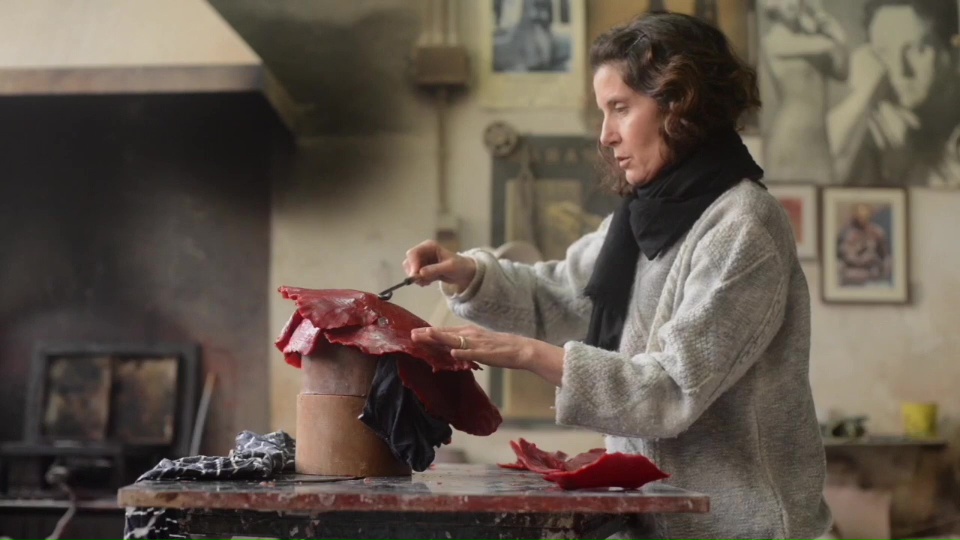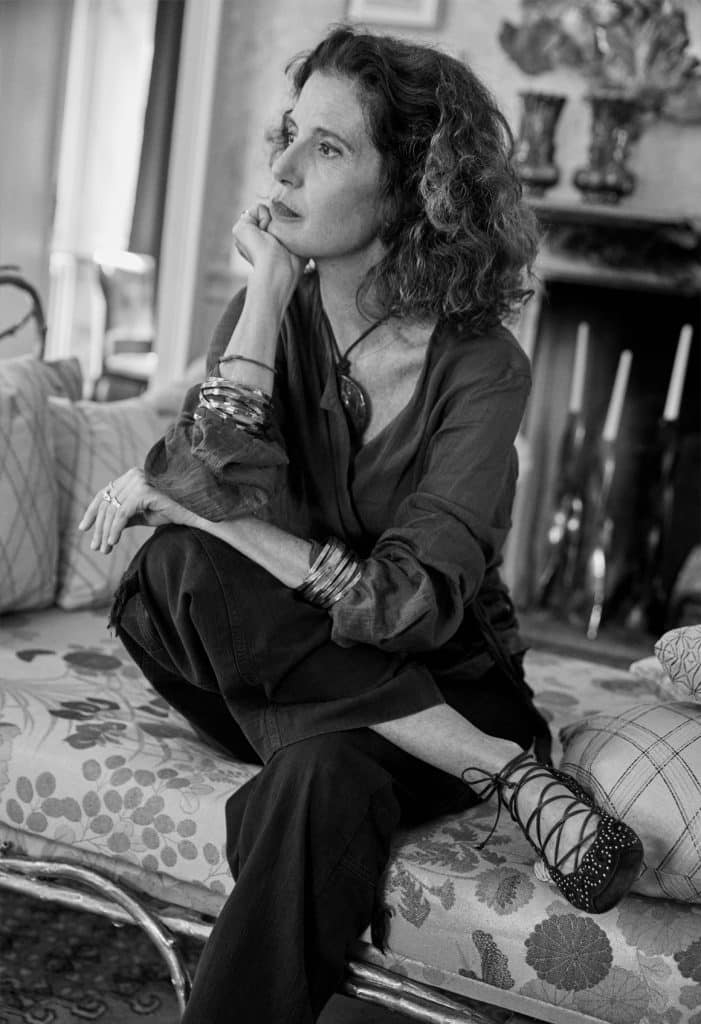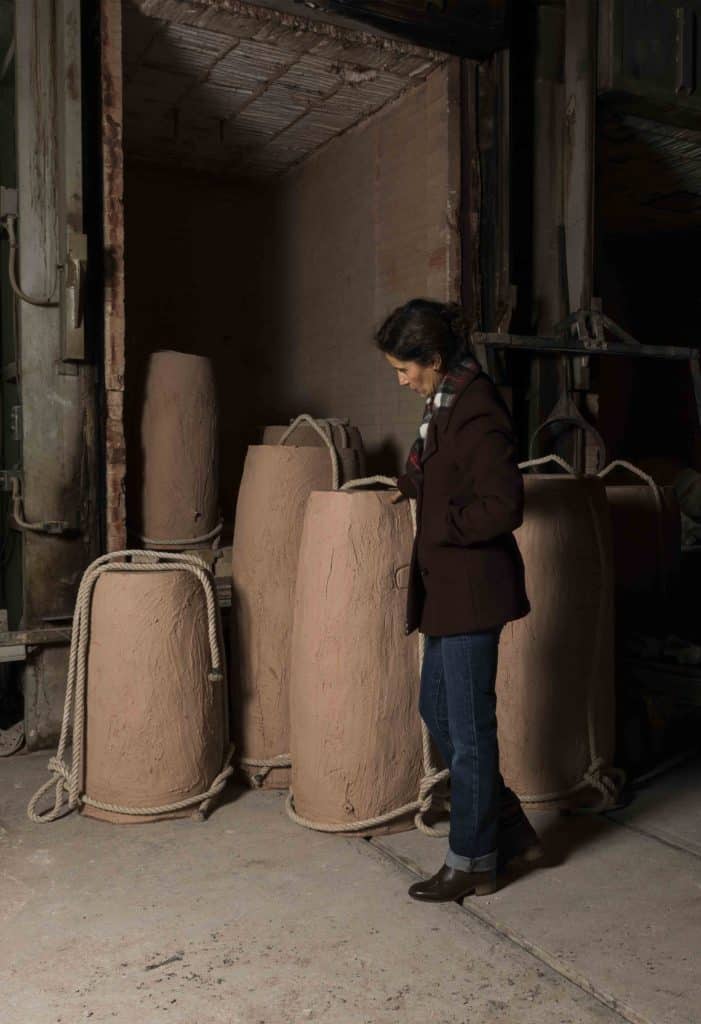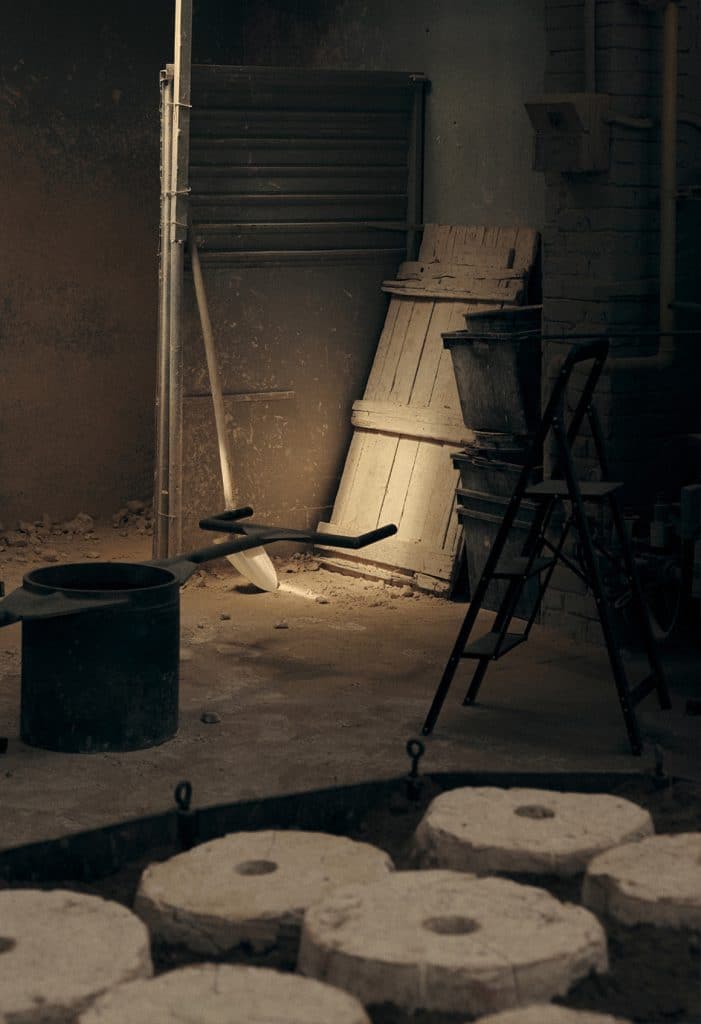First Intro craftsmanship of cast-bronze furnishings
craftsmanship of cast-bronze furnishings Made in Italy. Designed and produced by Osanna Visconti in Milan at an Italian casting foundry, as a result each piece is one-of-a-kind.
Second Intro craftsmanship of cast-bronze furnishings
craftsmanship of cast-bronze furnishings Made in Italy. Designed and produced by Osanna Visconti in Milan at an Italian casting foundry, as a result each piece is one-of-a-kind.
Third Intro craftsmanship of cast-bronze furnishings
Design objects craftsmanship Designed and produced by Osanna Visconti in Milan at an Italian casting foundr, as a result each piece is one-of-a-kind.
Fourth Intro
Craftsmanship of cast-bronze furnishings Made in Italy. Designed and produced by Osanna Visconti in Milan at an Italian casting foundry. Each piece is one-of-a-kind.
All of Osanna Visconti’s creations are fused in natural bronze using the lost-wax casting method. This ancient technique works with a negative form in which molten metal is cast. Osanna kneads and shapes her initial wax sculpture by hand. As the defining element of her creations, the wax model is used to create a plaster mould. During the drying phase in kilns heated to 650°C, the wax is melted and drained away, leaving behind the negative form for the casting of bronze in the art foundry.
“It’s very difficult to find young people who have the passion to learn this manual job. I hope that tomorrow’s youth will appreciate the beauty in being an artisan.”
Italian designer and maker, Osanna Visconti, casts exquisitely detailed jewellery and objects, both functional and decorative, from natural bronze using the lost wax technique – an ancient method that Greek and Roman artisans have been using since bronze was discovered 3000 years ago. Osanna shares with Cabana Magazine her love of historic buildings, collecting and artisanship, and discusses her hopes for the future of her craft.


Vision
Artist Portrait
While frolicking through the rooms and hallways of her childhood home in Rome, Osanna would marvel at the collection of modern art hanging on the centuries-old walls. Abstract geometric forms also predominated her mother’s style; she preferred signature pieces custom designed for her by contemporary artisans rather than classic jewelry. Osanna’s passion for all things precious was kindled early in life. After studying at the Academy of Jewels in Rome and the Gemological Institute of America in New York, Osanna returned to Rome where, in a basement workshop in Via Giulia, she discovered the volcanic magnetism of the cera persa (lost wax) casting technique. It was instant attraction.
Relocating to Milan over 30 years ago and immersing herself in the heart of the city’s artisan center, Osanna’s mastery of jewels gradually gave way to unique concepts of more sizable objets d'art and home furnishings. Starting at first with small-scale bowls and vases, she worked her way up to stools, candle holders and lamps. Ultimately, she came to craft the extensive creations she is known for, including tables, armchairs, mirrors, room dividers and multi-tiered bookshelves.
Osanna never stops creating, charting her own creative path beyond dimensions. Always in perpetual motion, her Atelier doubles as a workshop where she invents everything herself, from the definitively small to the infinitely large, weaving her own universe as she goes. International likewise is her clientele, who surround the Milanese Atelier in a collective gathering sui generis.
Osanna is both an artisan and an artist. She fuses art and technique, beauty and function. “I am not solely a sculptor or an industrial designer, even though I share their approach and quest for function with design. I create useful pieces that span beyond space and time, pieces I myself would love to own and share with others every day.”
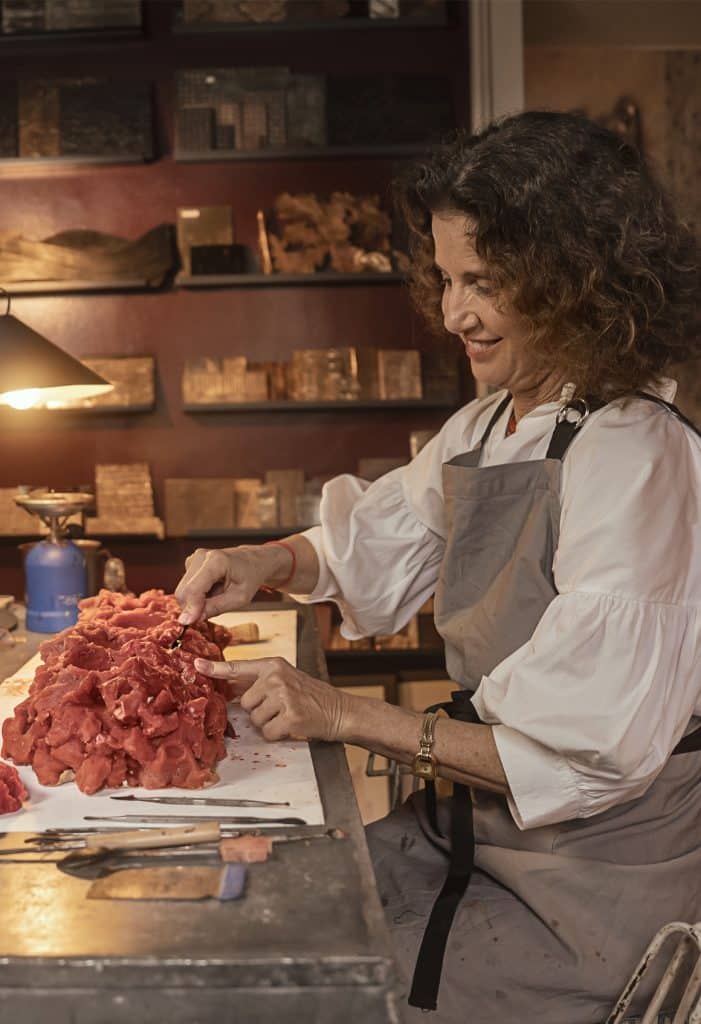
Lost-wax casting
Osanna sits at her workbench, surrounded by wax sheets and countless tools. She sets her alcohol lamp aflame, rips a piece of wax and starts warming and delicately sculpting it. From jagged edges and shifting surfaces, sometimes wavy, other times striped, the object she has in mind slowly starts to take shape. At long last, it becomes the plaster mould, the defining element to be cast in bronze.
Each step of the production process is then carried out in Osanna's trusted art foundry in Milan. This is where ideas and expertise fuse together from a hands-on approach. Collaborating with crasftsworkers renowned for precision and savoir-faire, their skill is essential in bringing Osanna's vision to life.
Craftsmanship
1. Nature is Osanna’s enduring source of inspiration. A branch, leaf, petal: she intricately coats whichever object captures her attention with wax.
She also sculpts models directly with her hands to bring new forms to life.
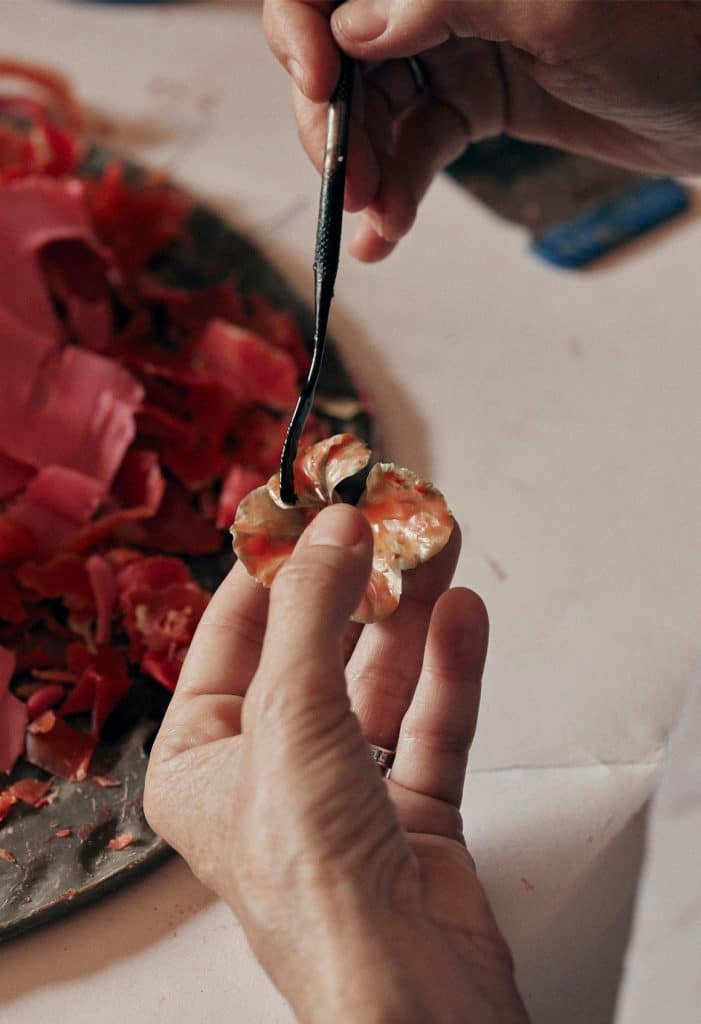
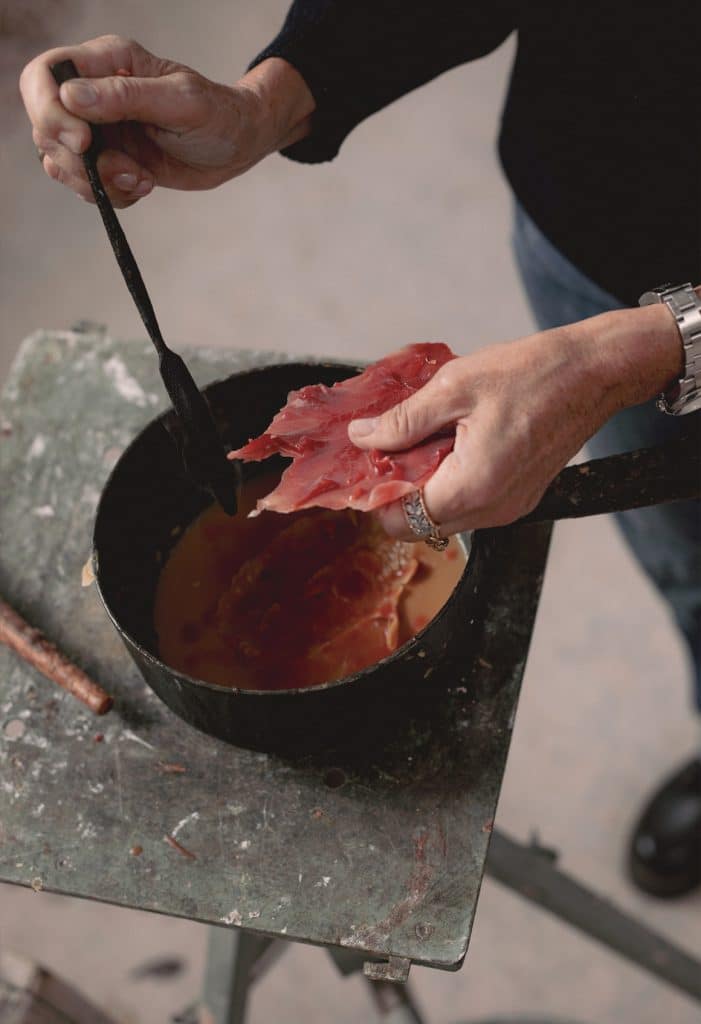
2. As sculpting is concluded, sprues, ducts and vents are added to the wax model.
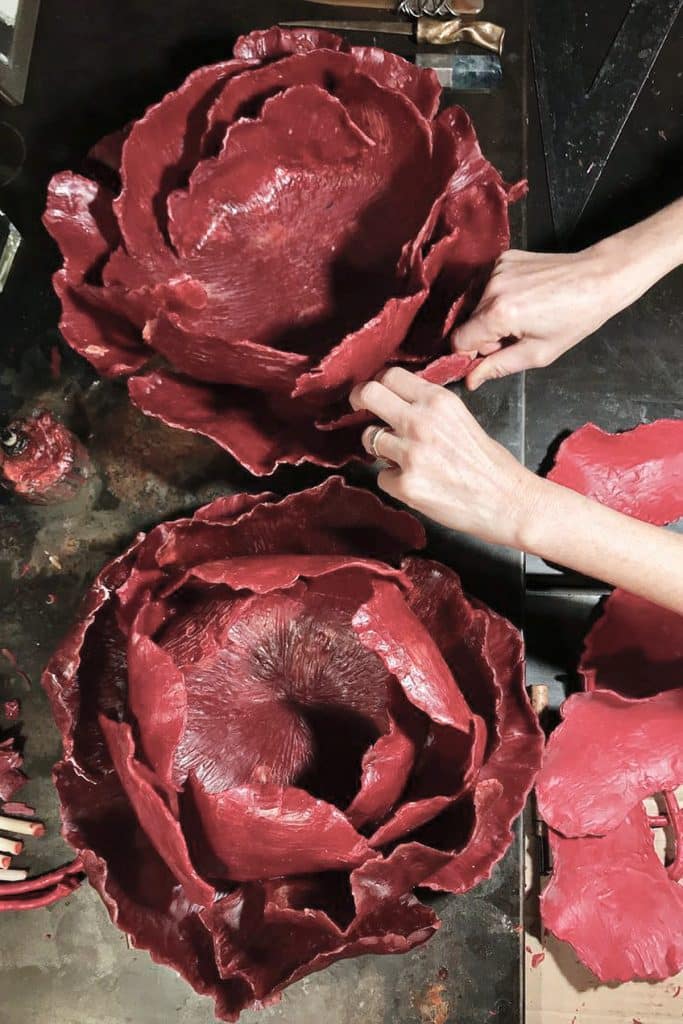
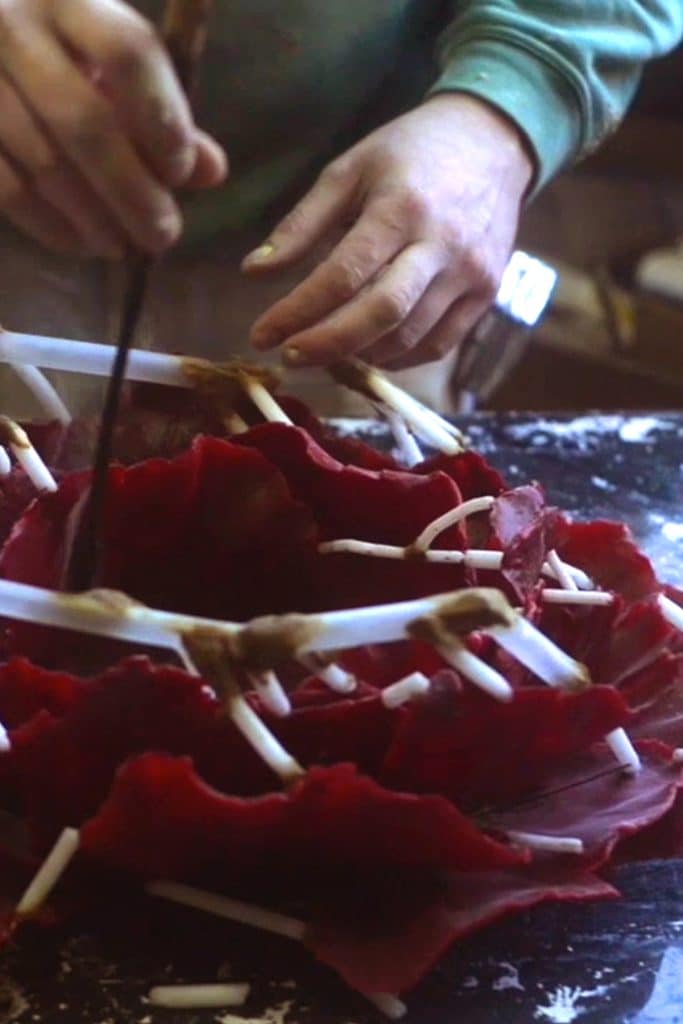
3. After the various channels have been fitted to the hand sculpted wax shell, the model is covered with red clay and plaster: the "mold" has taken shape.
It is subsequently placed in large furnaces at a temperature of 650°. The cylinder, made of refractory material, dries up causing any moisture to evaporate. The wax model melts away in the furnace, leaving the negative it has etched out as an interstice.
4. When the cylinders are removed from the furnace, they are ready for casting. Molten bronze pours out of a crucible into the opening of the molds,
filling the void left by the lost wax.
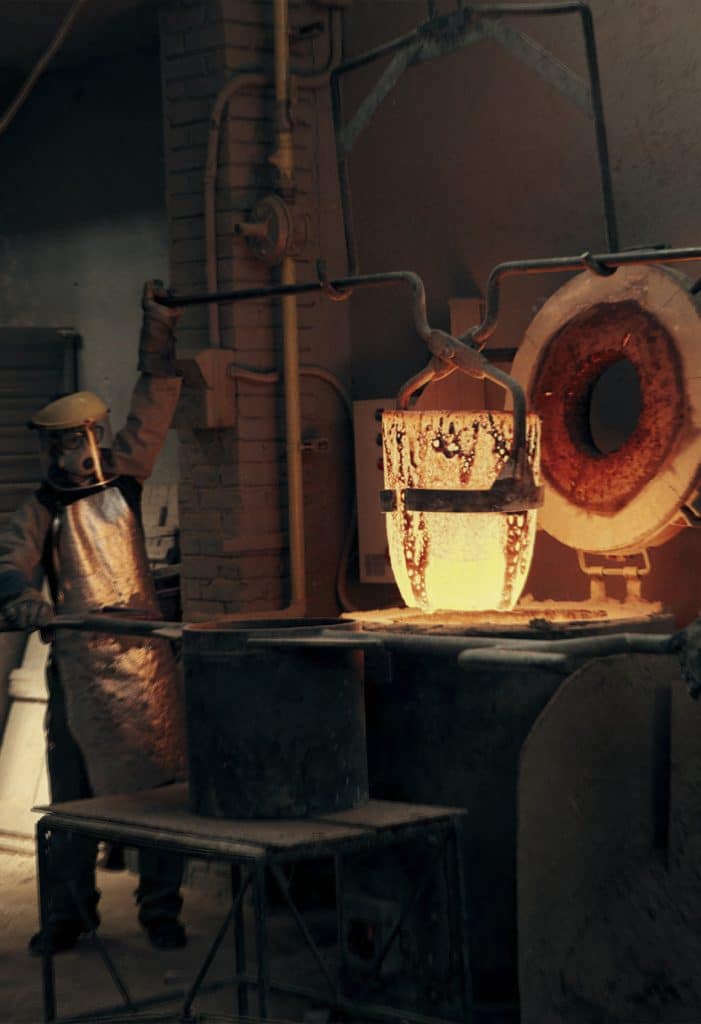
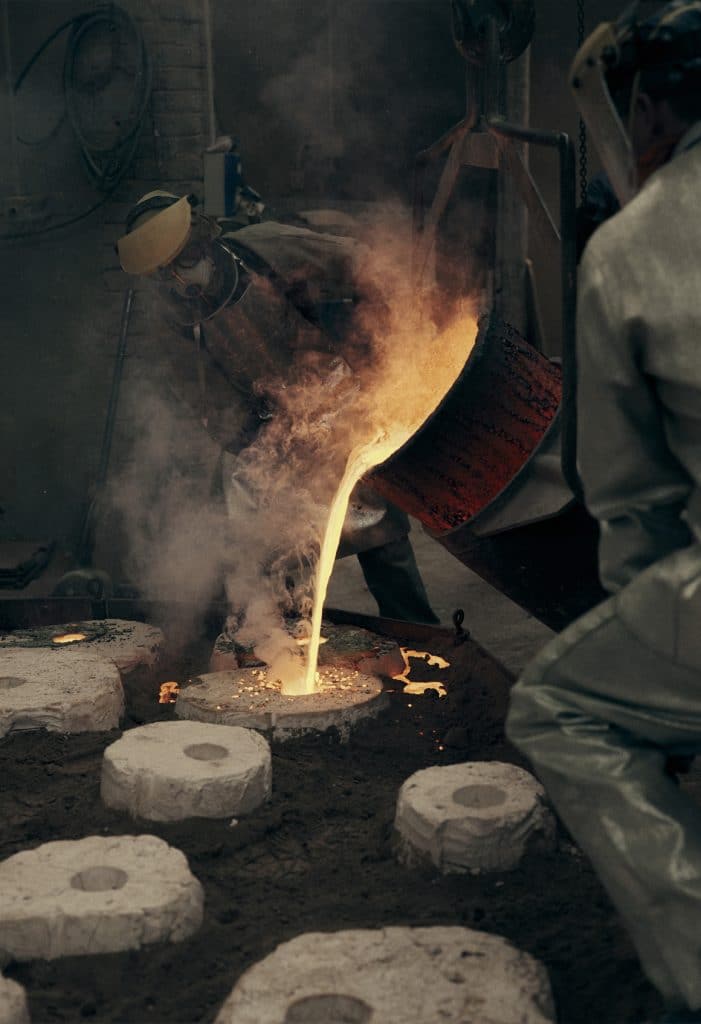
5. Once cooled, the molds are split open to reveal the cast object inside which is cleaned of the plaster and sprue residue.
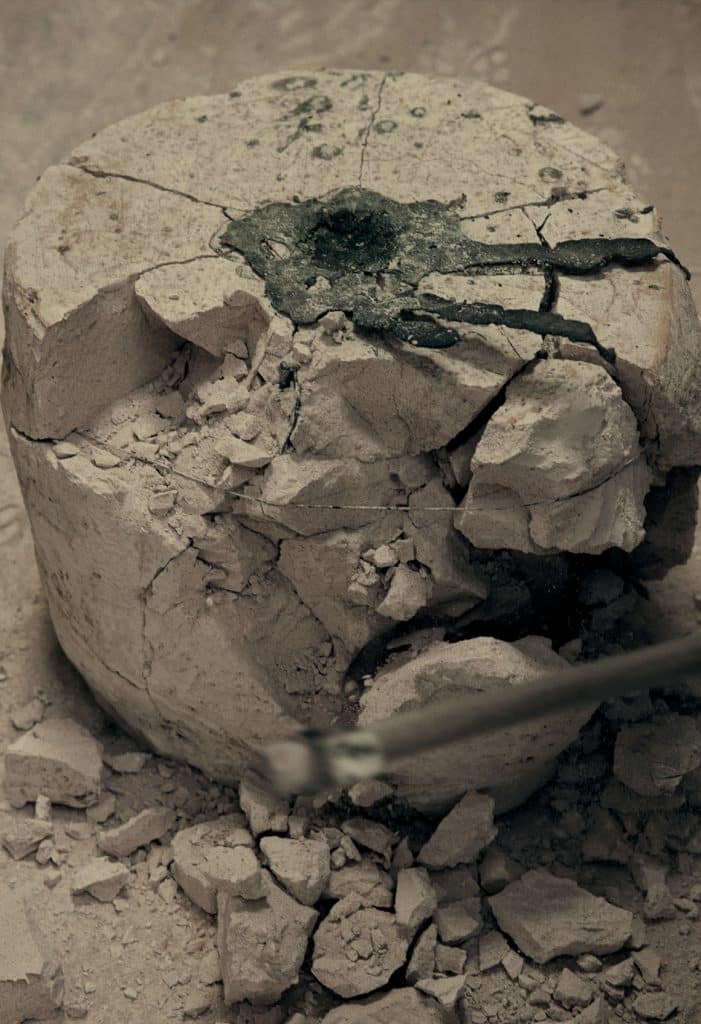
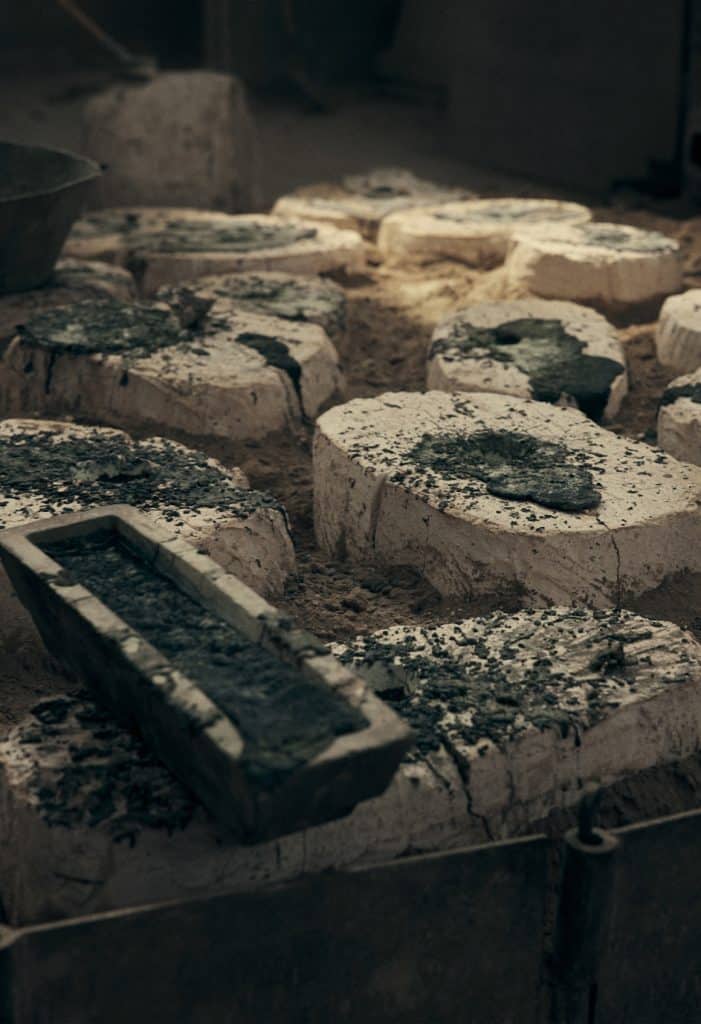
6. Chiseling and Polishing are the final phases. The castings are finished by hand using a chisel to remove all flaws and then polished.
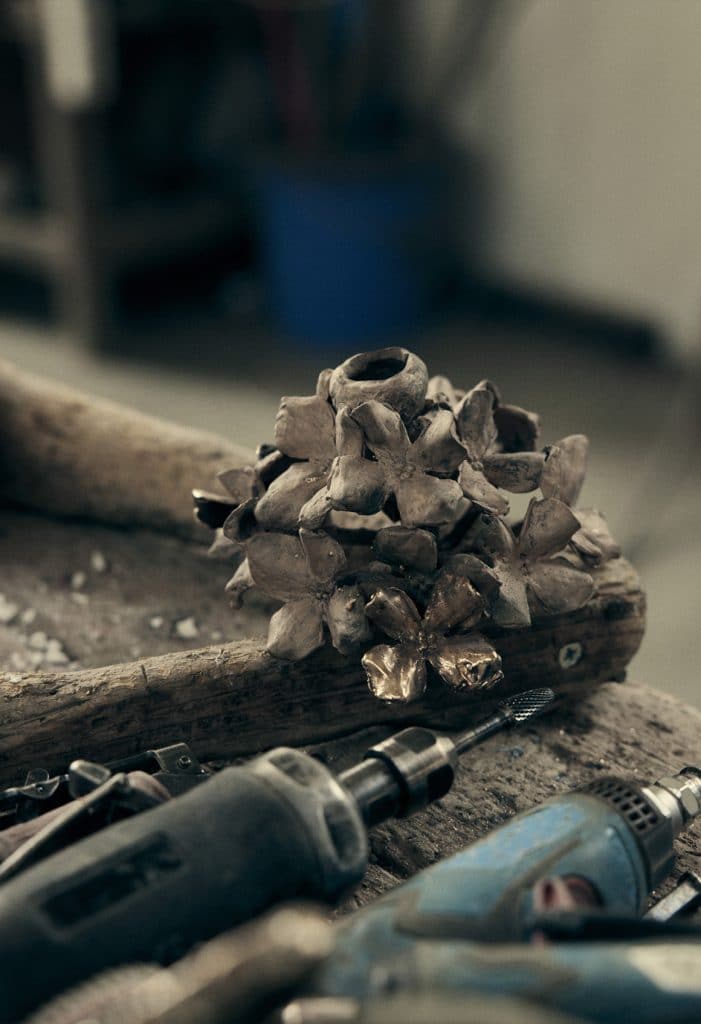
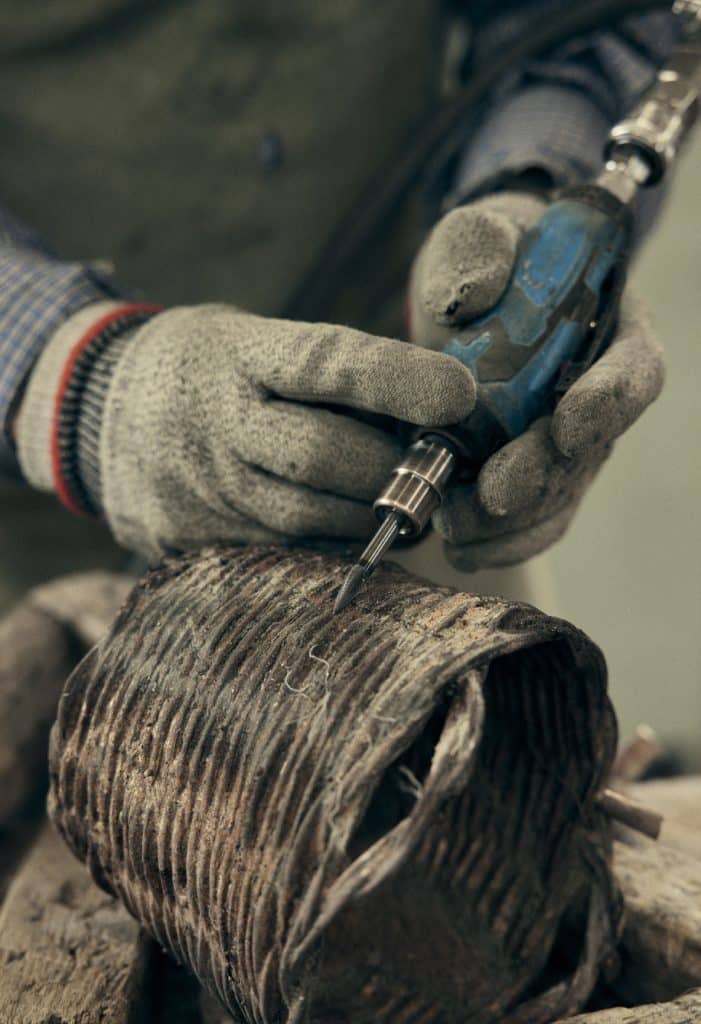
“In the quietude of a walk in the woods, my attention is captured by a leaf, a flower, a fallen branch. One out of hundreds. I select and collect it. It’s a gift from nature that I celebrate through my creative spirit and then freeze in time by transforming into bronze. Yes, what I love most about my work is the sense of eternity, immortality”

